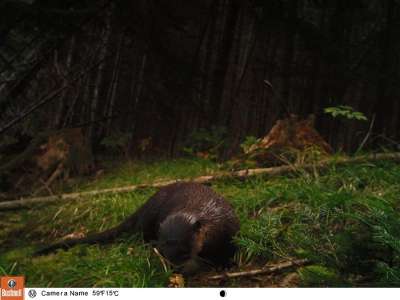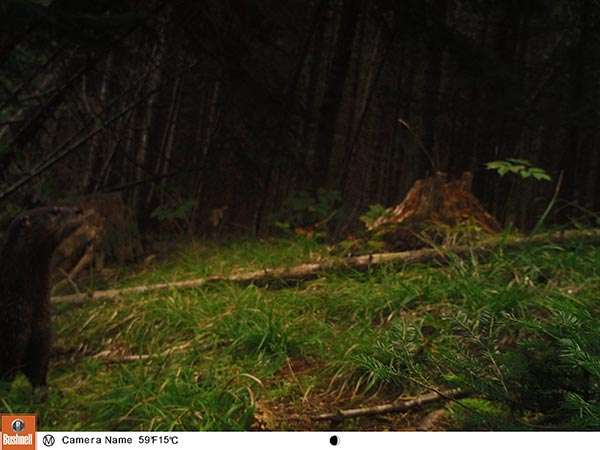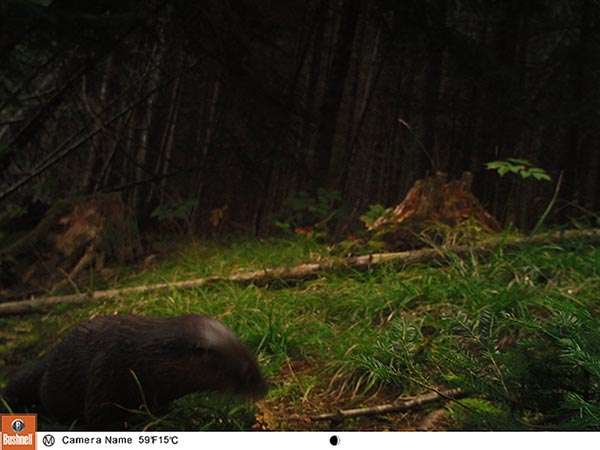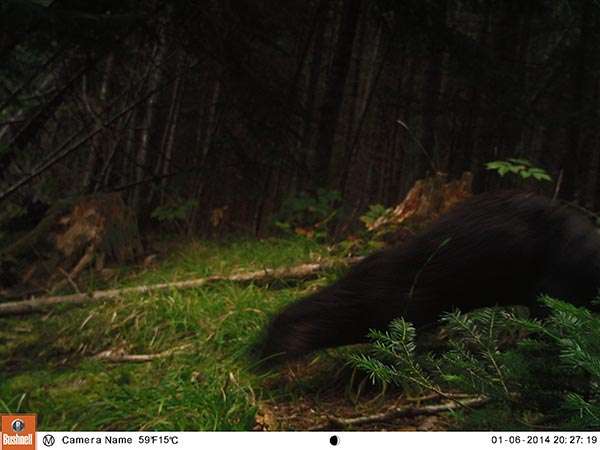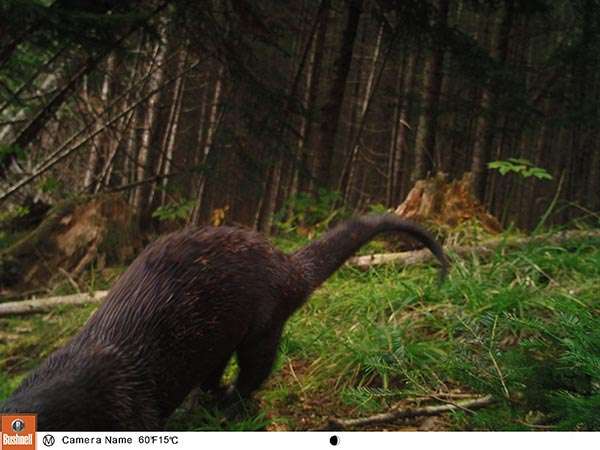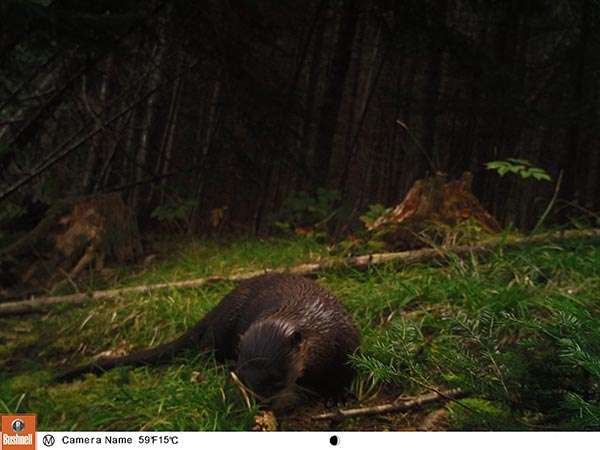We see a lot of game camera pictures of deer, bear, moose – the big charismatic animals that people love. And so to be different we wanted to camera trap an otter, an animal that’s not short on charisma but does seem to be underrepresented in photo exposés.
Our first step was to look for otter sign, and we focused our efforts around a chain of beaver ponds that are out behind the office. We only searched the abandoned ponds so as not to fill our memory cards with beaver shots. In a little copse of spruce and fir rising along the north shore of one pond we found an old otter toilet. These communal toilets serve not only as places to defecate, but also places to leave messages for other otters. Were we to transcribe these glandular notes, they’d probably say, depending on the time of year, things like: “Good food here,” or “Keep Away,” or “SBM, 5, seeking SF, looks not important.”
We set the Bushnell with the close-up lens directly on the path from the pond to the toilet, and 5 nights later we captured this series of shots. As you can see, we should have set the camera up parallel with the run, not perpendicular to it. If we had, we would have gotten more shots of the whole animal, not just a head or a tail. Still, there are some pretty cool pictures. Notice how in the one shot the otter’s covered in fir needles from rolling around on the ground.
This was a lone otter, and it doesn’t look very big, so our best guess is that it’s a 2 or 3 year old male. Females and kits usually travel in family groups. We asked our friend Bill Mackowski, a trapper and unofficial otter expert, what he thought and he confirmed it’s too small to be a mature “dog” male, but suggested it could be a female who’s taking the year off reproductively. Otters, like many other mustelids, breed in spring or summer but the fertilized embryo won’t implant in the female’s uterus until late winter. And it will only implant if she’s not worn down by the rigors of winter or motherhood. The scientific record indicates that in many areas biannual reproduction is the norm. When you consider that males don’t become accomplished breeders until they’re around 5 years old, it’s clear why otters never really seem abundant anywhere.


